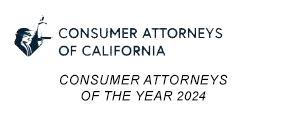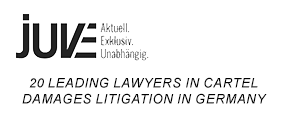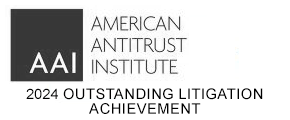North Bay Fires
December 2019 Update
The Official Tort Claimants Committee (“TCC”), representing fire victims and other tort claimants in Pacific Gas & Electric’s (“PG&E”) bankruptcy reorganization, announce an agreement with PG&E to provide $13.5 billion in compensation for the fire victims and other tort claimants. This agreement comes after months of the TCC negotiating with PG&E on behalf of fire victims and other claimants.
The $13.5 billion—comprised of cash, equity and other consideration—if approved, would be used to fund a trust dedicated to compensating these tort claimants and help fire victims rebuild their lives. The fire claims that would be channeled to the trust include claims arising from the 2015 Butte Fire, the 2016 Ghost Ship Fire, the 2017 North Bay Wildfires (including the Tubbs Fire), and the 2018 Camp Fire. The $13.5 billion settlement reflects a $5.1 billion increase from PG&E’s prior proposal of $8.4 billion.
PG&E to Record Unprecedented Charge to Cover Losses from 2017 Wine Country Fires
On June 21st, 2018, PG&E announced that it expected to be held liable for damage from most if not all of the deadly and widespread fires that coursed through the North San Francisco Bay Area in October of 2017, recording so far a $2.5 billion charge to cover losses. PG&E noted that the $2.5 billion charge represents the low end of anticipated potential losses; its press release stated, “The companies are currently unable to reasonably estimate the upper end of the range, because there are a number of unknown facts and legal considerations that may impact the amount of any potential liability.” The statements came after Cal Fire determined that many of the devastating North Bay fires had their origins in PG&E power lines and equipment that pressed against branches and trees or fell to the ground because of area winds.
Cal Fire Finds PG&E Equipment Caused Many of the 2017 North Bay Fires
The New York Times reported that Cal Fire has determined that of the 21 major fires last fall in Northern California, at least 17 were caused by power lines, poles and other equipment owned by Pacific Gas and Electric Company. The San Francisco Chronicle previously reported that state officials had revealed that at least nine of the wildfires that ravaged Northern California’s Wine Country last October, including the Napa and Sonoma county Nuns and Atlas Fires, were caused by PG&E power lines. This was the first official finding that PG&E equipment caused some if not all of the devastating fires in the North Bay in 2017. The deadliest fire from that conflagration, Santa Rosa’s Tubbs Fire, remains under investigation.
Court Overrules PG&E’s Demurrers to Inverse Condemnation Claims
On May 21, 2018, Judge Curtis E.A. Karnow of the San Francisco Superior Court issued an order overruling PG&E’s multiple demurrers to plaintiffs’ inverse condemnation claims. PG&E’s demurers sought the outright dismissal of plaintiff’s claims for damages against the utility, unless PG&E was granted the right to pass any damages award on to ratepayers. The Court disagreed with PG&E’s arguments on all counts, holding in favor of plaintiffs and directing PG&E to answer plaintiffs’ pending complaints by June 11, 2018.
Lieff Cabraser Attorneys Named as Counsel in the North Bay Fires Litigation
On March 6, 2018, Judge Karnow appointed Lieff Cabraser partner Elizabeth Cabraser and firm partner Lexi Hazam as Chairs of the Class Action Committee in the consolidated lawsuits relating to losses from the 2017 Wine Country Fires. Ms. Cabraser and Ms. Hazam were also appointed to the Individual Plaintiffs Executive Committee in the litigation. Read a copy of Judge Karnow’s Order.
PG&E Does About-Face on Automatic Power Line Restorers
Change Suggests Utility “Mishandled” North Bay Wildfires Response in Prelude to October 2017 Fires
On January 26, 2018, State senators reported observations of a drastic change in PG&E’s power line management strategy, highlighting a major post-fires shift the utility made after the devastating October 2017 North bay fires to disable thousands of line control devices that had previously been set to automatically restore power on lines experiencing faults.
The devices, known as reclosers, save the company money by remotely and automatically re-enabling problem lines without requiring human involvement. PG&E’s December 2017 about-face in disabling 4,000 reclosers in the North Bay appears to signal an admission that their previous approach — only 38 reclosers were turned off immediately prior to the October wildfires — of letting reclosers work without any human input “suggests the utility mishandled its North Bay response, given that it was well aware of the extreme winds and fire danger days in advance,” according to a report from NBC News.
October 2017 North Bay Wildfire Lawsuits Consolidated in San Francisco Superior Court
In the wake of the devastating fires that burned throughout northern California in October of 2017, more than 50 separate lawsuits were filed in multiple courts seeking to hold PG&E liable. On January 4, 2018, Judge Curtis E.A. Karnow of the California Superior Court issued an order consolidating the actions in San Francisco Superior Court. PG&E had sought to coordinate the actions in five clusters, including in counties that to date have no pertinent cases, but the Court held that issues of commonality and efficiency mandated coordination on a single court in San Francisco. Read a copy of the Court’s Order.
Lieff Cabraser Files Class Action Lawsuit Over 2017 North Bay Fires
On November 30, 2017, Lieff Cabraser filed a class action lawsuit on behalf of several named plaintiffs against PG&E for losses relating to the devastating October 2017 North Bay Fires. The lawsuit seeks to hold PG&E accountable for damages to real and personal property, loss of income, and loss of business arising from the fires. “As our complaints allege, these fires share common causes – they were sparked by PG&E’s unsafe electrical infrastructure,” noted Elizabeth Cabraser, one of plaintiffs’ co-counsel. “These preventable Fires have destroyed and disrupted Californians’ homes, businesses, livelihoods, and lives on an unprecedented scale. All of those harmed have a stake in the swiftest possible determination of liability, and in the fair and inclusive allocation of damages and compensation.”
New Reports Reveal Damaged PG&E Equipment Found Near Wine Country Fire Origins
PG&E has reported finding damaged electrical equipment near or at the suspected starting points of the four largest October 2017 Wine Country wildfires. The new reports, filed by PG&E with California officials, show that the sites match the suspected ignition spots for the Tubbs, Nuns, Atlas, and Patrick fires, which killed 30 people and burned more than 140,000 acres. As reported by the San Francisco Chronicle, regulators “have not yet identified a cause for any of the blazes that swept through the Wine Country. The agency has, however, said its investigators are examining the possibility that electrical lines sparked those fires.”
California Public Utility Commission Won’t Let San Diego Gas Pass Uninsured Costs from 2007 Fires on to Customers
On December 26, 2017, the California Public Utilities Commission unanimously ruled that the San Diego Gas & Electric Company and not its customers will have to pay $379+ million in uninsured costs relating to the 2007 fires in Witch, Guejito, and Rice that killed two people and destroyed over 1,300 homes. As reported by the Ventura County Star, “Investigators found SDG&E failed to properly maintain its equipment and trim tree branches and chaparral growing near power lines, which arced and sparked as those infernos began.” San Diego Gas and its insurers did pay over $2 billion for filed claims, but the utility had sought to get its customers to pay for all remaining costs via rate hikes and other charges.
California Public Utility Commission Sets New Rules Requiring Utilities to Reduce Wildfire Risks
In the wake of continuing fires across California, on December 14, 2017, the California Public Utilities Commission adopted new regulations requiring major utilities to take new proactive steps to reduce wildfire risks by taking better care of their transmission lines. “This new policy includes significant new fire prevention rules for utility poles and wires, including major new rules for vegetation management,” said PUC President Michael Picker in a prepared statement. Regulators directed utilities to increase the “clearances between vegetation and power lines” in high-risk zones. Those areas cover 70,000 square miles, or 44 percent of California’s land. Utilities were also given broader authority to disconnect customers who refuse to allow crews to come onto their property to remove trees that pose a fire risk.
Regulators Deny PG&E’s Southern California Counterpart Attempt to Charge Ratepayers for 2007 Fire Costs
On November 30, 2017, California’s Public Utilities Commission unanimously rejected San Diego Gas & Electric’s request to charge its customers $379 million to cover damage claims from three fires back in 2007 that destroyed 1,300 homes and killed two people, fires found to have been caused in part by utility power line and equipment problems. The case was being closely watched for its potential impact on claims arising from the 2017 fires across multiple North Bay cities and counties. PUC Director Elizabeth Echols noted that the decision “reinforces that if a utility did not reasonably operate its facilities prior to a fire, it can’t charge ratepayers.” PG&E unsuccessfully lobbied the Commission to vote in favor of San Diego Gas’ request. The utilities have been working to try to escape wildfire lawsuit costs, because under the inverse condemnation legal doctrine, they can be held liable for damages linked to their equipment failures even if they followed applicable safety rules. And where there is evidence of neglect or a failure to follow those rules, utility liability can be significantly higher.
2017 Wine Country Wildfires
An LA Times special report observes that dozens of investigators have already spent weeks “scouring wine country trying to solve the mystery at the heart of the most destructive wildfires in California history.” Their core question? What caused these infernos that destroyed over 8,000 buildings and killed 43 people? The paper notes that insured losses alone will exceed $1 billion, with full losses significantly higher — “[j]ust fighting the fires cost $189 million.” While it will likely be months before an official cause is determined, “there is already one prime suspect: utility giant Pacific Gas & Electric.”
And as the Times points out, “Even if no power lines started the fires, PG&E could still be found to have contributed to their spread.”
Lieff Cabraser represents clients who have suffered losses from these fires and the related devastation of the North Bay area.
California Insurance Department Warns of Insurers’ Giving False Information to Policyholders
Reports have emerged in the San Francisco Chronicle and elsewhere that some insurers are giving fire victims wrong information about their rights under California law. Insurance Commissioner Dave Jones issued a statement indicating that he had directed the California Department of Insurance to send a formal notice to insurers and licensed public adjusters to make sure all claims adjusters assigned to wildfire claims are properly trained on all laws relating to property and casualty insurance claim handling.
Several fire survivors provided examples to the Department of misleading information including incorrect and reduced time frames as short as 6 months for collecting full replacement costs for rebuilding (policyholders in fact have no less than 24 months under CA law); information that if policyholders decide to rebuild in a different location they cannot receive full benefits (false); and that additional living expense benefits would expire in 12 months (the correct time is 24 months). Consumers needing assistance can contact the Department of Insurance directly at 800 927-4357.
Background on the Fires
A series of fires in Northern California wine country have killed 44 people and seriously injured over 100. They have destroyed approximately 240,000 acres and 8,889 buildings, including thousands of homes as well as wineries, farms, hotels and restaurants, and retail businesses. Nearly 100,000 people have been displaced across Napa, Sonoma, and Lake counties, with many still unable to return home or without homes to return to. These fires are the most destructive in California history, and property and business losses are expected to be in the billions.
Cal Fire has already started investigating the sources of the disastrous fires, and though they say it’s too early to speculate on specific causes, the four locations already examined exhibit common features. SF Chronicle reporters noted that “Power lines ran near all of them, and at two locations, downed electric and telecommunications lines and broken tree branches had been surrounded by yellow crime-scene tape.” PG&E would not comment on the findings, but the San Jose Mercury News reports that the company has been aggressively urging state regulators to make it easier for the company to charge ratepayers – rather than its own shareholders – when its power lines and other electrical equipment cause wildfires.
PG&E Files to Keep Lawsuits Separated
On November 9, 2017, PG&E filed a motion with California’s Judicial Council for Coordinated Proceedings arguing that the 15 pending lawsuits against the company should not be consolidated before a single judge in San Francisco. The company contends the fires are all separate and different, and the lawsuits should all go before different judges in separate geographic areas. No decision on the motion has been made by the judicial council.
Post-Fire Reports Begin to Emerge, Fire Causes Still Not Clear
Regulatory reports issued October 31st indicate that wind gusts drove uprooted trees and snapped branches into PG&E power lines while in other locations power poles failed and knocked lines down entirely. State officials are acting quickly to release PG&E’s fire incident info, but point out that at this point the only data available reflect PG&E’s “first impressions” of what happened. In the days after the fires began, PG&E initially blamed “hurricane strength winds in excess of 75 mph in some cases” for damaging its equipment. Separate weather station readings found the winds were almost half that speed as the lines started to come down.
Earlier reports going back to 2013 identified 60 percent of the PG&E’s 113,000 miles of power lines as being at-risk of sudden failure. And at least one-fifth of the sytem — over 20,000 miles — is frail copper wire, “obsolete” and “more subject to breakage as it ages.” PG&E has already faced serious criticism for downgrading maintenance in favor of profits.
The new reports come out alongside updates on damages and losses, now estimated to top $3 billion. And more claims are coming, as noted by Insurance Commissioner Dave Jones.
Did Efforts By PG&E to Delay Mapping and Clearing Contribute to the Fires?
A Mercury News report dated October 22nd says California utilities helped delay efforts for nearly a decade to map where power lines posed the greatest risk of wildfires. State regulators have been trying to tighten regulations since 2007’s deadly San Diego fires sparked when wind knocked down power lines. PG&E and other utilities wouldn’t agree to stricter construction standards until maps were completed, then repeatedly sought delays, arguing in July 2017 that proposed regulations would “add unnecessary costs to construction and maintenance projects in rural areas.”
As Quartz.com has noted, PG&E successfully fought and won yet another delay against completing its mapping as late as October 6th. Two days later, the devastating fires began in and around Wine Country that would grow to burn more than 400 square miles and take at least 43 lives. As the fires began on October 8th, local fire crews visited more than 10 different PG&E power line locations in the wake of 911 calls reporting sparking wires and other problems.
As the San Francisco Chronicle notes, fieldwork auditors cited PG&E for late repairs and maintenance jobs “far more frequently than any other electric utility in the state.” On October 26th, the Mercury News published “PG&E’s Own Records Show the Utility Cannot Be Trusted,” an extraordinary editorial focusing on the utility’s “repeated failures to earn the Californians’ trust,” reminding readers that PG&E is “a convicted felon” due to its negligence that killed 8 and led to $1.6 billion in fines in the San Bruno gas disaster.
The editorial references state audits showing that PG&E violated electricity-grid safety regulations in the North Bay alone at least 11 times in the years prior to 2017’s ferocious wildfires and highlights newly-released 2015 and 2016 audits showing that PG&E failed “in thousands of instances over a five-year period to conduct timely inspections and work orders required by the state’s regulator in Sonoma and Napa counties.” As the editorial board notes, “That’s since the 2010 San Bruno gas line explosion that killed eight people and destroyed 38 homes…. During the same five-year period, PG&E pocketed about $1 billion in profits every year.”
Lieff Cabraser’s Work on Behalf of Fire and Accident Victims
Lieff Cabraser represents clients who suffered losses in these devastating 2017 fires. From our office in San Francisco, we have worked for more than 40 years to achieve significant and meaningful recoveries for individuals and businesses harmed by fires, toxic spills, and other environmental disasters. Early signs from these most recent fires point to the potential responsibility of PG&E, including reports from multiple locations of downed powerlines and exploding transformers as the fires were breaking out. The California Public Utilities Commission (PUC) and the California Department of Forestry and Fire Protection (CalFire) have announced that they are investigating PG&E and ordered it to preserve evidence all available evidence relating to the fires.
Unfortunately, PG&E has a long history of being implicated in wildfires and has paid large fines, verdicts and settlements for injuries and losses relating to these fires. PG&E is an investor-owned electric utility with publicly traded stock overseen by the PUC. It has repeatedly been found to have failed to properly maintain trees near powerlines and/or to have failed to supervise subcontractors it hires to do such maintenance, and to have diverted funds for maintenance to profits. PG&E took $1.41 billion in profits for 2016, up 58.4 percent from its profits in 2015.
Lieff Cabraser: Securing Justice for Northern Californians Since 1972
Lieff Cabraser has a long history of successfully championing the rights of those injured or who have lost property and businesses as a result of fires and other environmental disasters. Several of Lieff Cabraser’s attorneys live in the affected communities. Over the last 45 years, we have assisted our clients in recovering over $118 billion in verdicts and settlements. Our firm helped lead litigation against BP over the 2010 Gulf of Mexico Deepwater Horizon oil rig explosion and oil spill, successfully representing property owners, business owners, wage earners, and other harmed parties. Lieff Cabraser was also appointed by the court to lead litigation on behalf of homeowners, businesses and employees who suffered economic injuries relating to 2015 Plains pipeline oil spill in Santa Barbara, and also helps lead two class action cases on behalf of homeowners and businesses who suffered losses from the 2015-2016 Porter Ranch gas leak in Southern California.
Lieff Cabraser served as Liaison and Lead Class Counsel in lawsuits relating to the 1991 Southern Pacific train car derailment and toxic pesticide spill over a 45-mile stretch of the Sacramento River, as Co-Liaison and Lead Class Counsel in coordinated litigation arising out of the 1993 release of a massive toxic sulfuric acid cloud which injured an estimated 50,000 residents of Richmond, California, and represented hundreds of property owners and businesses around Roane County, Tennessee that were harmed by the 2008 TVA/Kingston coal ash spill, the largest such spill in U.S. history.
Contact us
If you have suffered losses from the Wine Country fires, whether injuries or property or business losses and would like to consult with a lawyer, please call us today in San Francisco at 415 956-1000 or use the form below to send us an email message.











